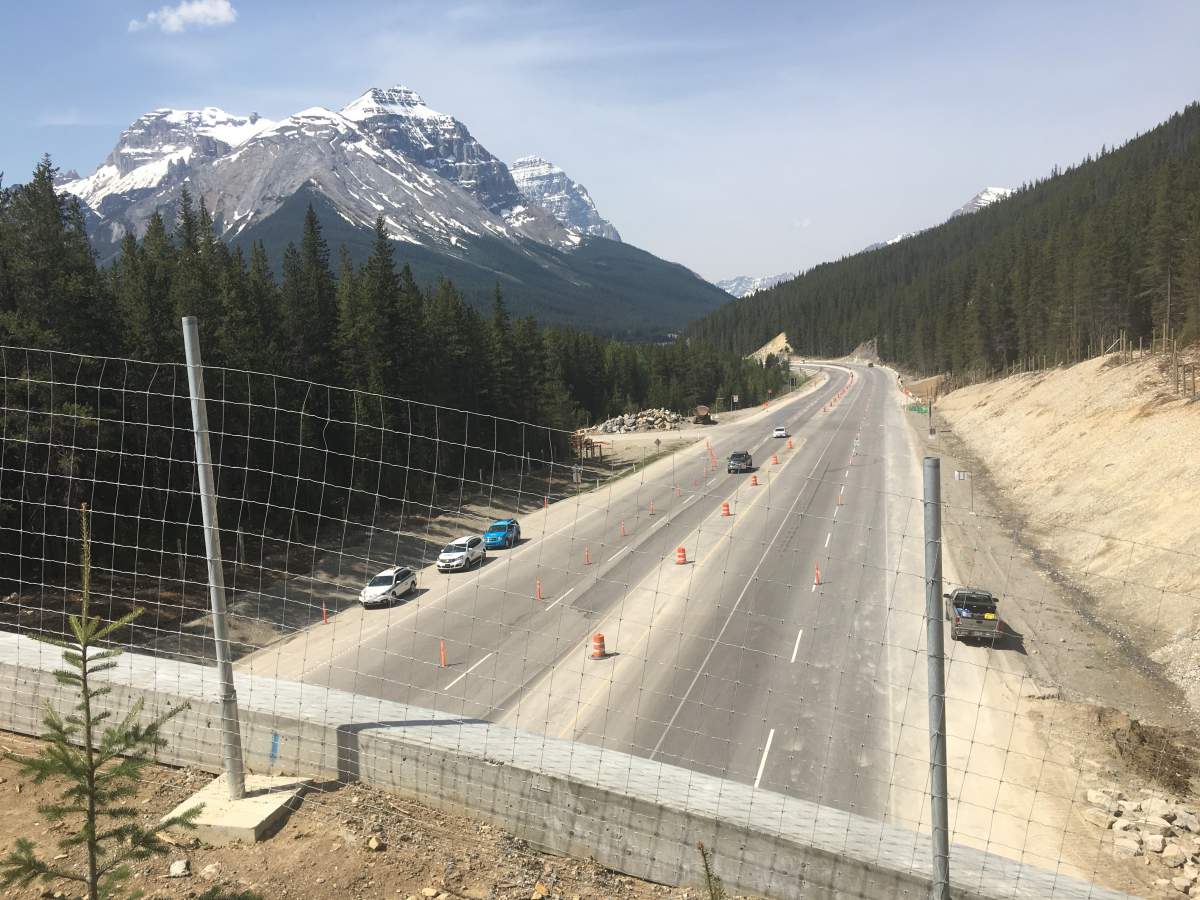Landscapers are putting the final touches on a brand new wildlife crossing structure that will be the biggest of its kind in the Rocky Mountains west of Calgary.

Parks Canada started building wildlife overpasses in Banff and Yoho national parks decades ago. Combined with wildlife fencing along the TransCanada Highway, the crossings have been a huge success both for reducing animal-vehicle collisions as well as with animal migration.
“We need the genetics of the animals on the one side and the animals on the other side to mix so you get a natural flow of populations,” said Trevor Kinley, an environmental assessment scientist with Parks Canada.
Bears, cougars, wolverine and a nearby herd of mountain goats are expected to start using the structure in the coming weeks.
“There’s a population of mountain goats up on Mt. Bosworth that come down from their typical high elevation habitat to a mineral lick that’s just adjacent to the highway,” explained wildlife ecologist Seth Cherry.

Get daily National news
“They’ll come down typically in the summertime to access minerals in the soils that we think are probably deficient in their diet in the forest at higher elevations.”
WATCH: What does an animal see when it crosses a wildlife overpass?

The new wildlife crossing near Lake O’Hara, just west of the B.C. border, is now one of seven in the Banff and Yoho national parks.
Combined with 42 animal underpasses the TransCanada west of Banff now hosts the longest animal crossing system in the world.
The newest crossing is 60 metres wide and has berms that are at least a metre high on either side of the structure to minimize both noise and the view of the highway.



Comments